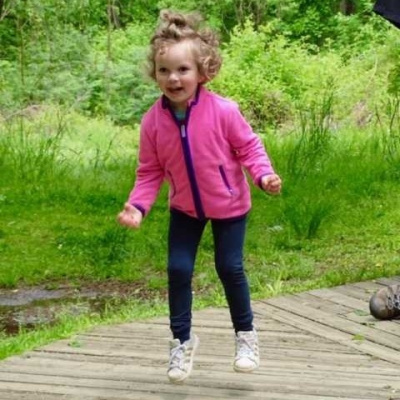With some exception, most journal entries are written by Erin and posted by Meg Turnbull or Maike Johnson.
Updated January 12, 2021.
Sierra has been treated exclusively at the Children's Hospital of Philadelphia (CHOP), founded in 1885. CHOP is the nation's first children's hospital.
Ways to help (in no particular order):
- Donate blood or platelets with Sierra and kids like her in mind. Between May 17 - March 2019 Sierra needed 50+ transfusions during her treatment journey.
- Host a blood drive in Sierra’s name (
https://www.redcrossblood.org/hosting-a-blood-drive/learn-about-hosting/how-hosting-a-blood-drive-works.html?)
- Sign up to be a bone marrow/stem cell donor at Be The Match (
https://bethematch.org/) – the registry currently lacks enough diversity to match the needs of the patients who require marrow or stem cell transplants. This is one reason why ethnically/racially diverse patients have lower survival rates than they otherwise could. If you can't sign up on the registry help spread the word about the health disparities and the need for more people to sign up on Be The Match.
- Donate to the CHOP Oncology Department (
https://www.chop.edu/centers-programs/cancer-center), the Leukemia and Lymphoma Society (
https://www.lls.org/), or to the annual CHOP Parkway Run & Walk (
http://parkway.chop.edu/) in Sierra’s name (or of course just donating is also great)
- Recycle and donate: Collect tabs from aluminum cans and mail/bring them to Erin (the hospital can make money from these). Since they started collecting tabs, the oncology department has made over $166,000 from these simple donations.
Background & Treatment timeline:
- Sierra was born full-term without any complications and was a healthy at birth. Before mid-May (2017), Sierra had never been sick.
- Around mid-May (at 11 mos of age): Sierra had an ear infection in each ear and was subsequently given a ten-day course of antibiotics by her pediatrician. She continued to have frequent low-grade fevers. I took her to the pediatrician and/or to urgent care 5 times before we were admitted to CHOP for blood work on the evening of May 22. The ER docs and nurse practitioners very quickly focused on the fact that all of Sierra’s blood values were normal except her Absolute Neutrophil Count (a scary 30), her Red Blood Cell Count, and her Platelets. Her Hemoglobin was 2.9. The docs said if these counts had been only a little low, they might suspect a blood borne infection – viral or bacterial – but since the counts were incredibly low, they were more suspicious of Leukemia.
- May 23, 2017: we had our diagnosis. One more piece of information remained, which was whether or not Sierra's Leukemia cells had a chromosomal anomaly.
- On May 26, 2017: it was confirmed that Sierra did in fact have the type of Leukemia where the cell has an anomaly- Acute Lymphoblastic Leukemia (akute lymphatische Leukämie) and KMT2A (MLL) Gene Rearrangement (the last bit describes the particular anomaly). The first admission was 7 weeks. Sierra was subsequently treated until February 2018, mostly inpatient.
- February – May 2018: the cancer was in remission and Sierra was at home “on maintenance chemo”
- May 2018: Sierra’s cancer relapsed, this time in her central nervous system, ultimately requiring radiation to save the vision in her right eye. The vision in her left eye was unfortunately permanently damaged.
- May-July 2018: maintenance meds and preparation for bone marrow transplant, including bone marrow biopsies, spinal taps, meds 24x7 for a month, surgery and partial removal of her ovary, placement of another central line, various scans, and the recruitment of a donor.
- July 31- September 11: inpatient stay for bone marrow transplant, ultimately using her father’s stem cells for infusion (August 9) after another donor became unavailable
- September 11, 2018 - January 28, 2019: Time mostly at home with outpatient procedures and following very limiting post-bone marrow transplant protocols for immune protection
- January 28, 2019: relapse of the central nervous system confirmed via MRI and spinal tap. At least 6 of Sierra's cranial nerves were affected. The medical team indicated this was a very serious situation.
- January 28 - March, 26, 2019: surgical placement of another central line, apheresis, steroids and chemotherapy to prepare for CAR-T immune therapy treatment. Sierra ate 12 eggs a day several times, driven by intense, steroid-driven cravings.
- March 26, 2019: infusion of CAR-T, Sierra’s T-Cells, reconfigured to identify and attack leukemia cells (
https://www.chop.edu/treatments/car-t-cell-therapy-immunotherapy-b-cell-acute-lymphoblastic-leukemia)
- September 25, 2019: 6 month follow-up spinal tap and marrow aspiration.
- September 26, 2019: the first day without food tube formula for almost exactly two years - Sierra finally eating well enough to sustain herself after all this time
- January 2, 2020: 9 month CAR-T follow-up spinal tap and marrow aspiration.
- January 6, 2020: Sierra started nursery school
- January 16, 2020: we began to use Hizentra immune globulin antibodies, a weekly home infusion for Sierra as long as CAR-T works.
- March 13, 2020: nursery school closed due to Coronavirus
- April 8, 2020: Port removal! And 1 year post CAR-T marrow aspiration, spinal tap and labs
- May 5, 2020 - Immunology appointment about how Hizentra and immune function are working
- August 2020 - 2 year bone marrow transplant follow-up; 1 1/2 year CAR-T follow-up - labs, EKG and ultrasound of the heart - all good


